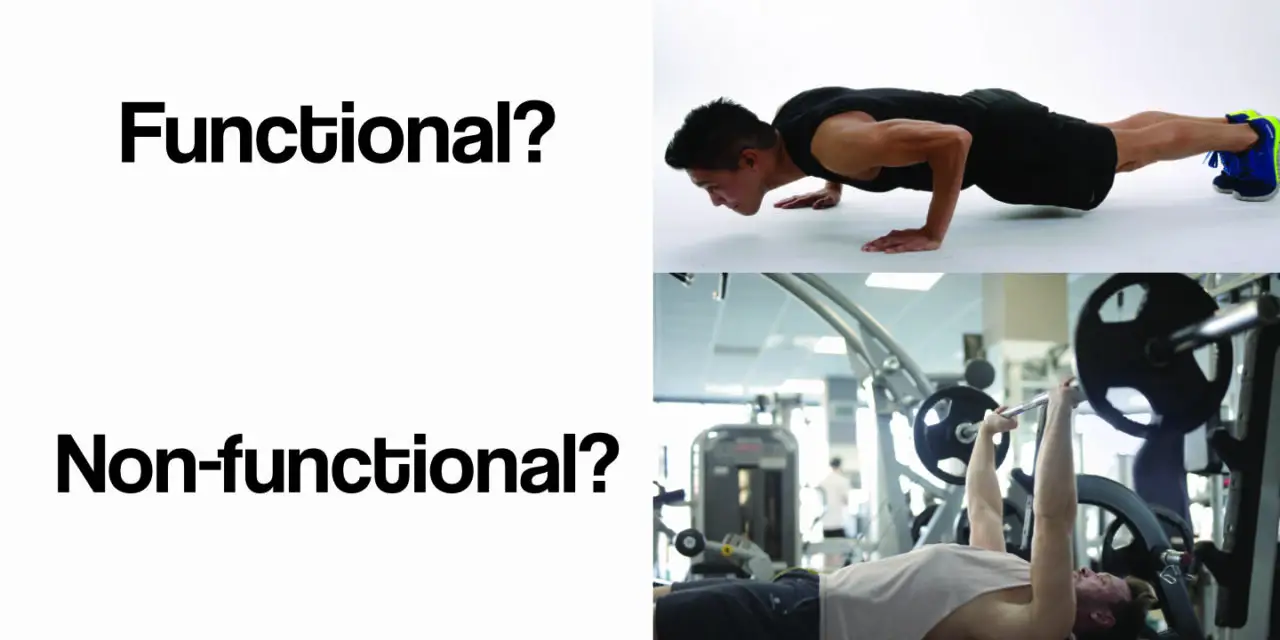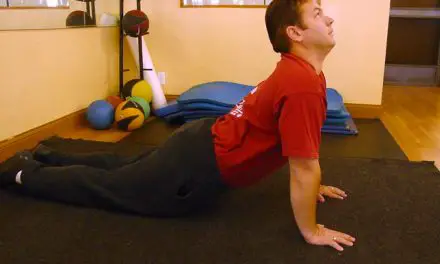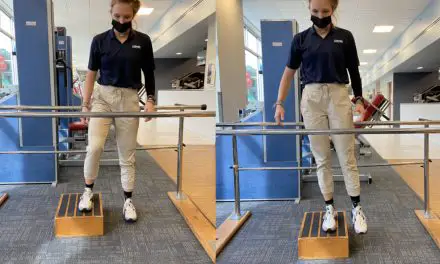Unlike other types of strength training, functional strength training currently has no common definition. Some personal trainers subscribe to functional strength training as an approach based on the SAID principle (Specific Adaptation to Imposed Demands), which states that muscles adapt to specific tasks we require from them.
Others define it as being rooted in the FITT principle (Frequency, Intensity, Time, and Type), which outlines how often you should perform certain exercises for maximum benefit.
However, some believe the term “functional strength training” is nothing more than a buzzword—a fashionable term created to draw attention to a concept or a product. So what is it?
Differences between functional and traditional strength training
The biggest difference between functional strength training and the traditional version is that “functional training” focuses on specific movements while traditional training focuses on building muscle mass and strength with little consideration of specific movements. Since there’s no agreed-upon term for “functional strength training,” we’re going to address the SAID and FITT principles.
Generally, functional strength training emphasizes movements and exercises that are relevant to everyday life, such as walking, running, bending, and lifting and turning while improving muscular strength, endurance, coordination, and balance. This is often used in both the physical therapy setting and in gyms that focus on sports training and physical fitness. The intent is to train your body and mind through repetitive motion with resistance, building muscle memory and strength (like in the SAID principle).
For example, if you’re training for abdominal power for baseball or golf, it’s better to train from a standing position (e.g. lifts and chops with a cable machine or resistance band) rather than doing sit-ups because both sports are done standing up. Likewise, if you want to strength your lower body and core to help you stand up from a chair, then using a Smith machine would be preferably over a leg press or leg extension machine.
However, if you’unable to perform the Smith machine exercise, then the other machine might be alternatives to help you develop raw muscular strength before progressing back to the squat exercise.
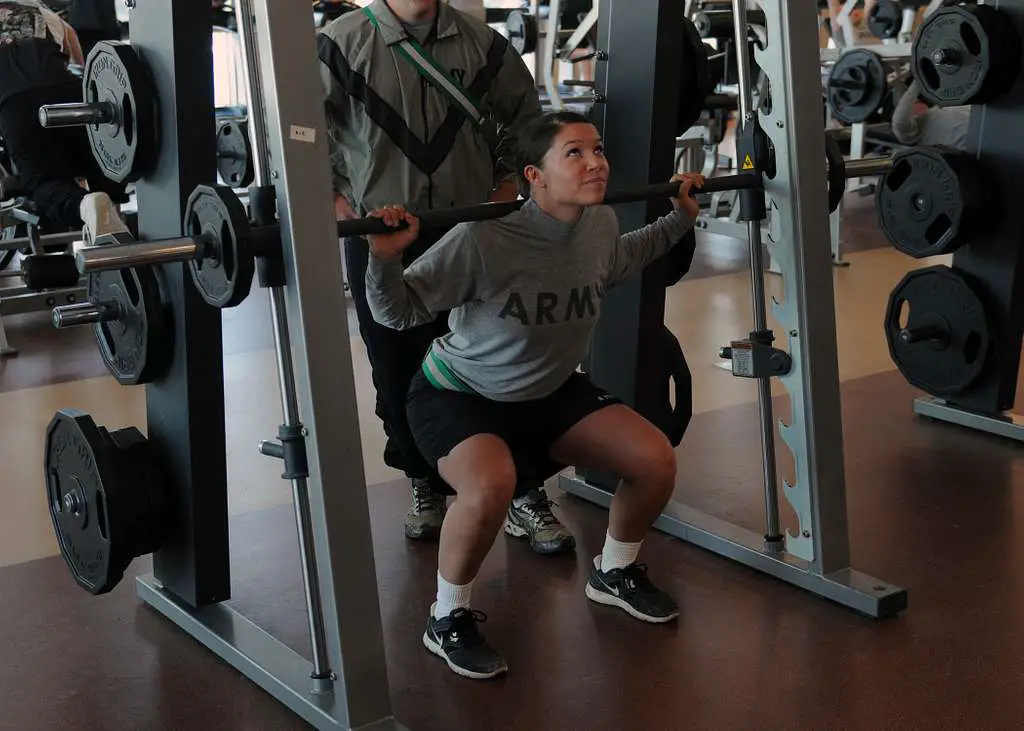
Using a Smith machine for squats is one option to develop “functional” lower-body strength. (U.S. Army photo by Staff Sgt. Andrew Porch/Released)
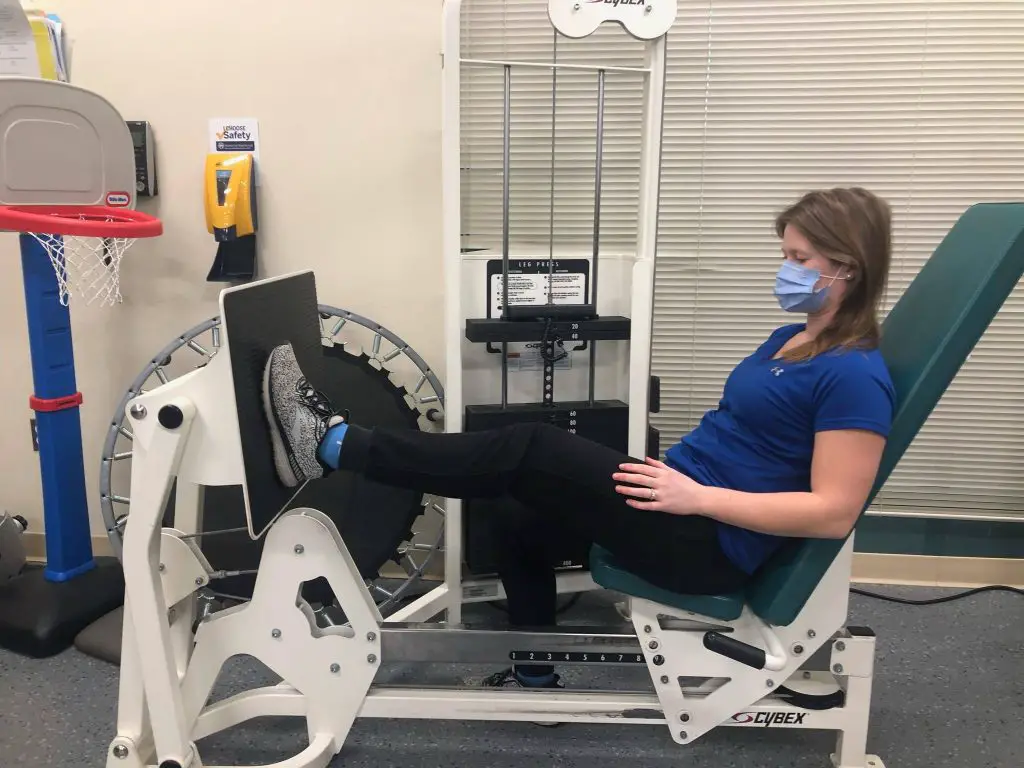
Although less “functional,” using a leg press machine would still be functional to build leg strength if you cannot perform a squat. (Photo: Tanvi Maharaja)
The FITT principle can translate into different forms of circuit training like Crossfit, P90X, and similar high-intensity workouts. You can adjust the:
- Frequency (how often you do it per week)
- Intensity (how hard or easy you want your workout to be)
- Time (how long is your workout, including rest periods between sets)
- Type (what kind of exercises you do)
Traditional strength training focuses on lifting weights and performing repetitions to build muscle mass and increase strength, with the hope of improving physical performance. While this approach is useful for some athletes and bodybuilders, it does not necessarily translate to the things you do everyday.
Practicing traditional strength training consists of isolating body parts and performing exercises that focus on a single muscle group, such as biceps curls, chest presses, etc. You can apply the intensity and frequency of the FITT principle and the SAID principle to traditional strength training and functional training.
While this may not be ideal for every body, these forms of exercise can help with coordination, balance, and overall body mechanics—sometimes better than traditional strength training alone which targets specific muscles without putting emphasis on the body mechanics of everyday life.
With the help of a qualified and experienced trainer, functional strength training can be an effective way to improve muscular health, performance, and overall fitness if you keep the SAID and FITT principles in mind.
Is “functional training” backed by science?
Functional training is mentioned in scientific literature when defined as a form of exercise that mimics the movements and actions of daily life in a structured regiment. But the biggest conjecture is using the term “functional training” as it implies that there is the concept of non-functional training, which doesn’t exist since the body “functions” during every form of workout.
In 2022, a team of researchers, led by Dr. Gustavo Mota from the Department of Sport Sciences at the Federal University of Triângulo Mineiro in Brazil, published a review that examined the definition and nature of functional training, including the terms “functional fitness,” and “high-intensity functional training.”
They examined 20 trials with these terms from the year 2020 and onward. The pooled studies have huge variations in subjects, experiment protocols, and exercise factors (e.g. type, duration).
They concluded that “the terms ‘functional training,’ ‘high intensity functional training,’ and ‘functional fitness’ no longer describe any physical training program.” This is due to the unspecific nature of the term itself. And so, functional training should not be seen as an all-encompassing approach to health and fitness.
They pointed out that some researchers claim that functional training researchers “increase efficiency and safety” of daily activities and sports, but the evidence for traditional strength training had already established that. “Thus, it is not an exclusive or differentiating characteristic of [functional training] programs per se,” they wrote.
“Trainers and coaches should consider the importance of selecting more appropriate terminology when communicating with each other and their clients/athletes, especially in scientific papers,” said Mota and his colleague Dr. Bernardio N. Ide, who also co-authored the paper, in an online interview. “Specifically, we argue that ‘functional training’ is a redundant term/concept and should be excluded from scientific literature.”
Mota et al. stated that despite there are studies on functional training, there is no standard definition. This means that each study can be skewed, favoring that researcher’s definition of what functional training is.
What if you define “functional training” as a practice that conforms more to the frequency, intensity, type, and time of the FITT method? Well, scientists have trouble agreeing on whether this concept is beneficial. It seems that FITT has had positive results for targeted work on chronic pain as well as benefits to heart and lung health, but most reviews cite the lack of consistency in the different FITT methods as the reason this type of workout could be detrimental.
The FITT method can be valuable in certain circumstances but only when you respect the needs and limitations of your body. If you decide to pursue this approach, make sure you have a full understanding of what different workouts do to your body. Also, consider proper form as this will help avoid injury or overexertion in the long run.
[Further reading: Is Concentric or Eccentric Contraction Better for Bigger Muscles?]
[Further reading: How to Train for Hypertrophy vs. Strength, According to Science]

Lindsay Jones, LMT
Lindsay is a licensed massage therapist and a mother of three, who specializes in rehabilitation with emphasis on prenatal and postnatal care.
After graduating from the National Holistic Institute in San Jose, Calif., she went on to study how pain affects the body and how it can be alleviated during the constant changes of pregnancy and early motherhood.
In her free time, Lindsay has a deep love of all forms of art from storytelling and music to sewing and painting.

